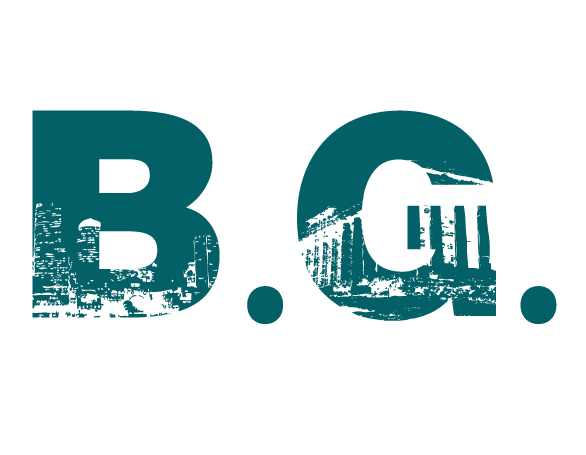Successful teams distinguish themselves by how effectively they prioritize their work. Product-led teams, in particular, excel by putting user needs and strategic product goals at the forefront of their decision-making process.
“The value is in what gets used, not what gets built.” – Kris Gale
Let’s explore how product-led teams prioritize their scope, supported by practical examples that highlight their methodologies.
What is a Product-Led Team?
A product-led team prioritizes development work based on the overarching product vision, user needs, and long-term strategic goals. Unlike feature-driven teams, which may focus on delivering specific features often driven by stakeholder demands or market competition, product-led teams ensure that every initiative contributes to the holistic value of the product.
Key Principles of Product-Led Prioritization
-
User-Centric Approach:
-
Empathy for Users: Understanding and empathizing with users’ needs and pain points is fundamental. Continuous user research, including surveys, interviews, and usability testing, helps to keep the focus on delivering genuine value to users.
-
Example: A team working on a fitness app might identify through user feedback that users struggle to stay motivated. Instead of adding arbitrary new features related to various workouts, they prioritize developing a personalized workout plan feature that adjusts to user progress and preferences, addressing the core user need of sustained motivation.
-
-
Alignment with Product Vision:
-
Long-Term Goals: Product-led teams have a clear product vision and long-term goals that guide their decisions. Each scope item is assessed for its alignment with these goals.
-
Example: If building a new internal project management tool aimed to enhance team collaboration, a product-led team might prioritize features like real-time editing and integration with popular communication tools over less relevant features like a new color scheme for the UI.
-
-
Impact Assessment:
-
Value vs. Effort: Initiatives are evaluated based on their potential impact on user satisfaction, retention, and engagement versus the effort required to implement them.
-
Example: An e-commerce platform might discover that users frequently abandon their shopping carts due to a complicated checkout process. The team decides to streamline the checkout process, which, although requiring significant development effort, promises substantial improvements in conversion rates and user satisfaction.
-
-
Iterative Development:
-
Continuous Feedback Loops: Product-led teams rely on continuous feedback from users to inform iterative development. This ensures the product evolves in a way that maximizes value.
-
Example: A team developing a note-taking app might launch a beta version of a new note tagging system. Based on user feedback, they iterate on the feature, improving usability and functionality before a full rollout.
-
The Prioritization Process in Product-Led Teams
1. Gathering and Analyzing User Feedback
-
Surveys and Interviews: Regular surveys and interviews help identify user pain points and preferences.
-
Example: A music streaming service conducts user surveys to find out which features users find most valuable. They discover a strong demand for better playlist management tools.
-
-
Usability Testing: Observing how users interact with the product reveals areas for improvement.
-
Example: During usability testing, a banking app team notices users have difficulty navigating the account settings. They prioritize redesigning the settings menu for easier access.
-
2. Defining and Refining the Product Vision
-
Vision Workshops: Regular workshops with key stakeholders ensure the product vision remains clear and relevant.
-
Example: A social media platform’s product team holds quarterly vision workshops to revisit their goal of fostering meaningful connections. They decide to focus on features that enhance user interaction, like video calling and group chats.
-
-
Goal Alignment: Every potential project or feature is evaluated against the product’s long-term goals.
-
Example: For a language learning app aiming to improve user engagement, the team prioritizes gamification features that make learning more interactive and fun.
-
3. Conducting Impact Assessments
-
Value vs. Effort Matrices: Teams use matrices to plot the potential value of features against the effort required to implement them.
-
Example: A health monitoring app uses a value vs. effort matrix to decide between developing a new sleep tracking feature or improving existing heart rate monitoring. The heart rate monitoring improvement is chosen for its higher impact on user health insights.
-
-
KPIs and Metrics: Defining clear key performance indicators (KPIs) and metrics helps measure the potential impact of initiatives.
-
Example: A travel booking app identifies key metrics like user retention and booking completion rates. They prioritize initiatives that are likely to boost these metrics, such as a personalized recommendation engine.
-
4. Iterative Development and Continuous Improvement
-
MVP and Beta Testing: Launching minimum viable products (MVPs) or beta versions allows for real-world testing and feedback.
-
Example: A team working on a new messaging feature for a collaboration app releases an MVP to a select group of users. Feedback is used to refine the feature before a wider release.
-
-
Agile Methodologies: Using agile frameworks, such as Scrum or Kanban, supports iterative development and continuous improvement.
-
Example: An online education platform employs agile sprints to develop and refine a new interactive quiz feature, incorporating user feedback after each sprint.
-
Real-World Examples of Product-Led Prioritization
Airbnb: Airbnb’s product-led approach involves deeply understanding their users – both hosts and guests. When they noticed hosts needed better tools to manage their listings, they prioritized developing features like dynamic pricing and enhanced calendar management. These initiatives directly addressed user needs and aligned with Airbnb’s vision of providing a seamless hosting experience.
Slack: Slack’s product-led team focuses on improving workplace communication. User feedback revealed a need for better integration with other tools. Slack prioritized building robust APIs and integrations with popular services like Google Drive and Trello, enhancing the overall user experience and aligning with their vision of being a central hub for workplace productivity.
Spotify: Spotify’s product-led strategy centers around personalized user experiences. By analyzing user data, they identified the importance of personalized playlists. Features like Discover Weekly and Daily Mix were prioritized, significantly enhancing user engagement and satisfaction.
In Conclusion
Product-led teams prioritize scope by focusing on user needs, aligning with a clear product vision, assessing the impact versus effort of initiatives, and embracing iterative development. This approach ensures that every feature or improvement contributes to the long-term success and relevance of the product. By putting users at the heart of decision-making, product-led teams deliver meaningful and sustained value, driving user satisfaction and business growth.
Understanding and implementing a product-led prioritization framework can be transformative for teams looking to build products that resonate deeply with their users and achieve strategic goals. By continuously gathering user feedback, aligning with a clear vision, conducting thorough impact assessments, and iterating based on real-world insights, product-led teams ensure they are always working on the most valuable and impactful initiatives.
Thank you for reading,
Boris Godin
* AI helped write and generate images for this post
If you enjoyed this post, please share the love and subscribe to the Product Management Mastery newsletter for more content like this.
Let’s Build a Better World.
Whenever you are ready:
Here are a few ways I can help you:
- Generate leads & customers by getting your product or business in front of 1,800+ subscribers of the Product Management Mastery Newsletter here.
- Hire me as your fractional Senior Product Manager / Head Of Product to unlock fresh perspectives on how you can add more value for your customers here.
- Have an idea💡 for a product you want to build? I can help you with product strategy, design, development, & launch. Click here to submit a request for a free consultation.




